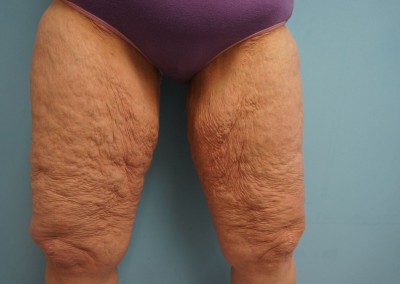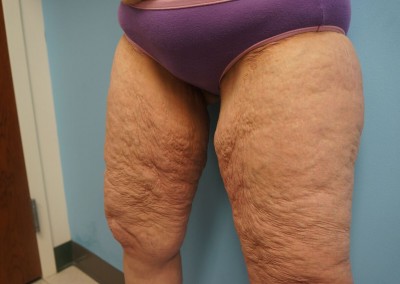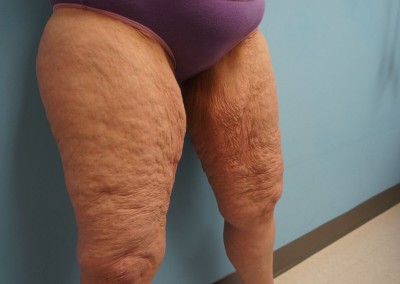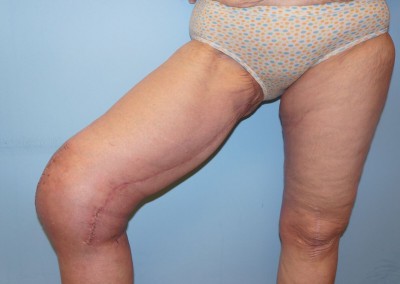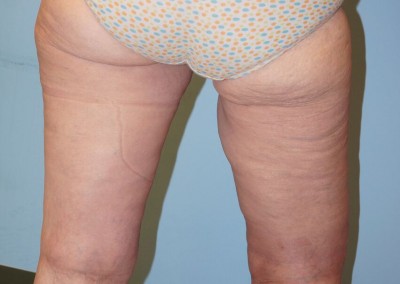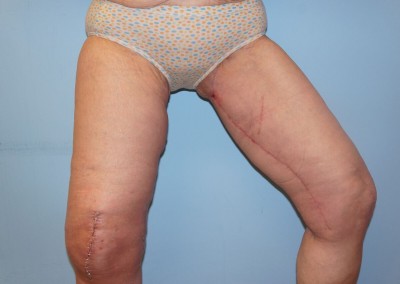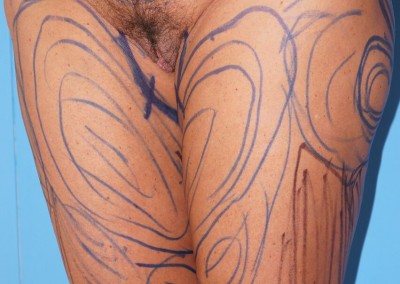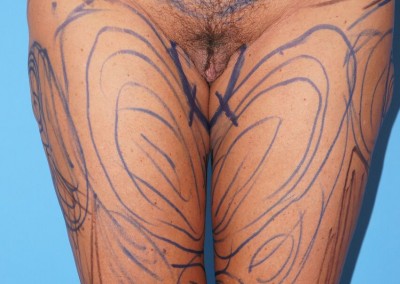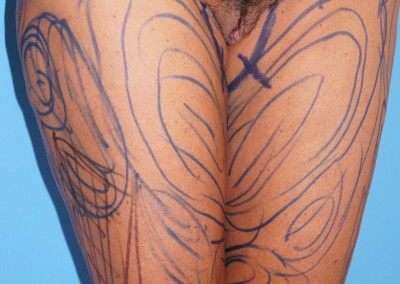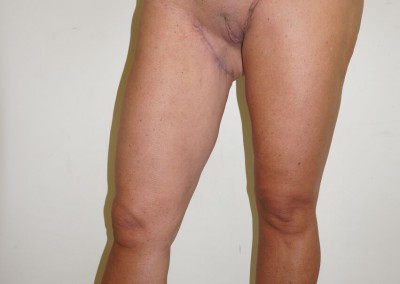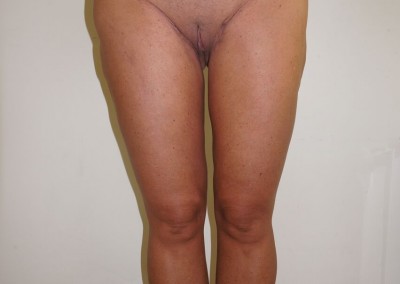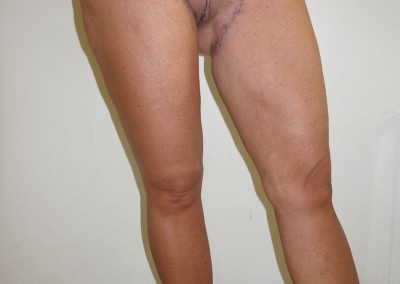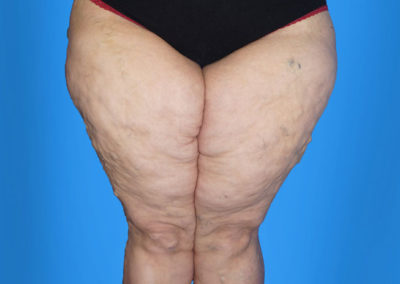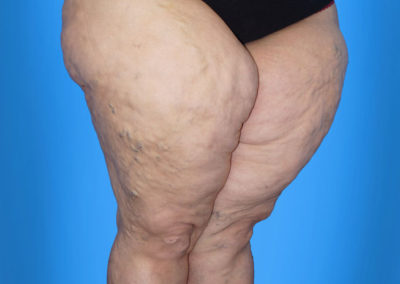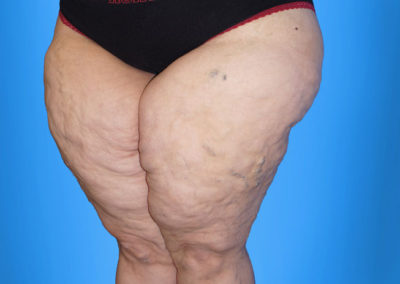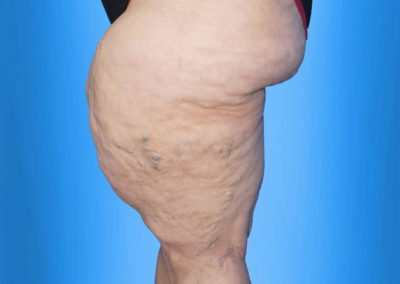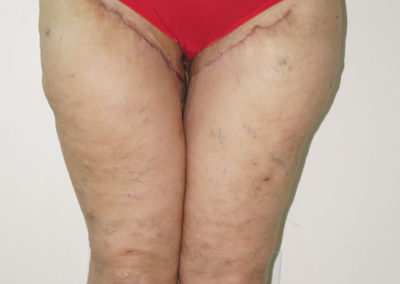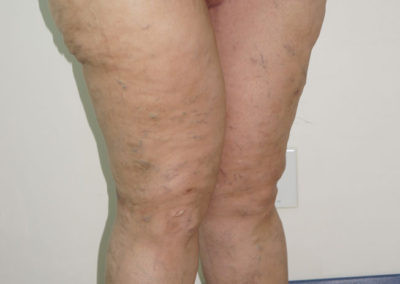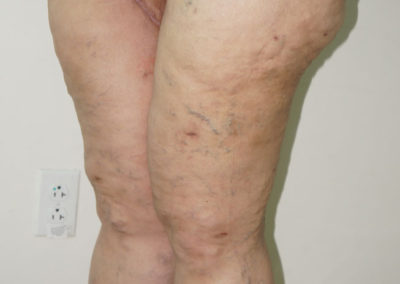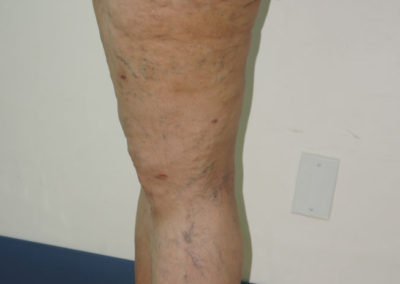 Thigh Lift
Thigh Lift
The most important component of a perfect thigh lift is being vigilant on where the scars are placed. I use a technique called the “inner lenticular posterior lift”, which I have perfected over time to place the scars in the inner upper aspect of the thigh in the inner groin area, and immediately posterior to the most visible shadows of the anterior thigh. The scar is completely placed in the inner upper thigh, and it is not visible to anyone. The incision is placed in a concave surface, which again eliminates any undo forces on the incision leading to a scar that is almost not visible in most patients.
The key to lifting the thigh is recognizing the strength layer of the thigh, which is hidden between the skin and the fatty tissue around it. This layer is anchored to the strength layer of the pelvis, which does two things, one it provides long lasting results, and two prevents distortion of the female genitalia.
What I do differently is distributing the tension along the ligament to the pelvis, which allows the skin closure to be ideal. The second unique characteristic of my technique is to keep my incision posterior to the anterior groin crease, and right at the junction of the inner medial thigh and the pelvis. This is a key location so that the scar is not seen, and the forces of tension are eliminated.
The major questions I get asked about the medial thigh lift are the complications, and how fast can I get back to work? The major complications reported after thigh lifts are seroma (fluid collection), infection, dehiscence of the incision, and distortion of the genitalia in females. The key to minimizing the risk to seroma are to minimize the dead space created during the operation. Dead space will be filled by fluid, and a seroma will be created. My technique closes the incision in layers, which effectively eliminates the dead space. In addition the use of special small drains that pull the fluid out via a small gentle suction technique prevents fluid from collecting. Preventing a seroma is key since seromas can get infected, can place pressure on the incision leading to dehiscence and a wound, which will affect the ultimate outcome.
Preventing infection is also important since the groin area contains an environment that is conducive to bacterial growth. Meticulous technique, not leaving ischemic dead tissue behind, and a well-designed layer closure is the best way to minimize infection. A layer closure technique, which decreases the tension on the skin, will minimize dehiscence of the incision as well. Lastly, to prevent distortion of the genitalia in females, the key is identifying the strength layer of the thigh, and using this layer to anchor the thigh tissues to the pelvis and not the tissues of the genitalia. This will place the vector of force that the thigh tissues create not on the genitalia, but on the pelvis.

